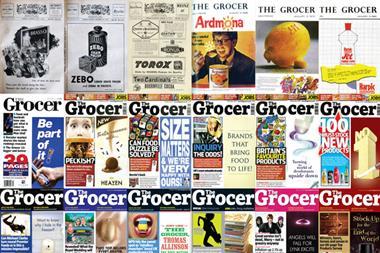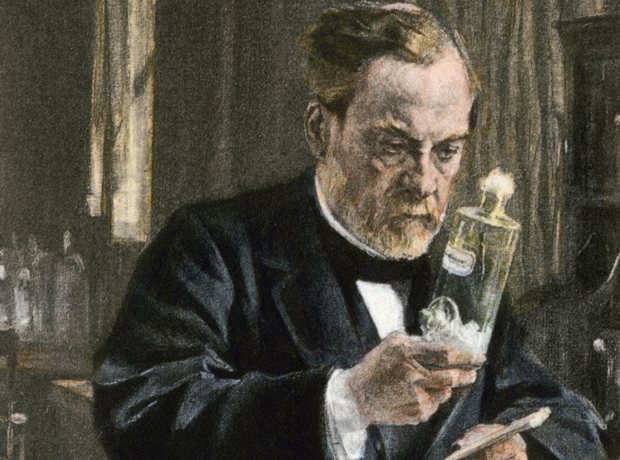The Grocer’s long-held reputation as the “bible of the food business” was never more obvious than during the Second World War.
As the invasion of the supermarkets from North America did not materialise until after the conflict, it was Britain’s independents, or “private grocers,” as they were known, who were the dominant forces in food retail.
And since those counter service traders formed the major part of our readership during the early forties this magazine was the natural vehicle to work with the hard-pressed Ministry of Food to keep grocers informed throughout the hostilities.
Everyone was issued with a ration book in September 1939 although the rationing scheme did not get into full swing until January 1940 when bacon, butter and sugar were the first commodities to be restricted.
Customers had to register with one shopkeeper to obtain their basic foods, but they could look elsewhere for unrationed goods.
The system was fair, but complex, and often changed when supplies of important commodities fluctuated, so there was a need for a coherent communications machine to keep in touch with the trade.
The Grocer team, headed by the late Christian Reed, grandfather of the current group managing director, Charles Reed, moved into top gear.
Central to the effort was the weekly publication of commodity prices, a feature of the magazine that was to double in size — and relevance — once the war ended.
But with severe supply restrictions on some traditional foods the list contained quotes for many unusual items.
These ranged from rabbits and mountain hares (quoted in 1941 at three shillings per head) to rates for tapioca and sago, not to mention semolina and flour.
In addition, and despite production restrictions caused by a rationing of newsprint, we assisted the government’s efforts by publishing a special customers’ rations register containing columns of specific items.
This was obtainable, for just six shillings, from our office in Eastcheap Buildings, London, in the heart of the capital’s canned goods trading area, and just a Thames-width from Tooley Street, the hub of the provisions business.
Inevitably, shopping for groceries during the war years was usually a dull affair. Queues were often long and there was little choice in the stores.
Many household name brands disappeared from the shelves or assumed a new identity under what were known as utility labels. Packaging was limited, with wrapping paper for most goods prohibited, and customers were expected to provide their own bags.
However, even if their products were not available during the hostilities, many regular supplier advertisers in The Grocer printed what were described as “economical recipes” as they were keen to keep their names before the trade and public.
To most Brits the small amount of meat on the official ration was the real problem, since the ration was 1s. 2d. (6p), per person per week.
Advertisements in The Grocer, restricted to one ninth of a page due to paper rationing, contained insights into the problems faced by the trade.
Thus the magazine was to gain in importance by offering regular expert advice to retailers on dealing with the supply restrictions.
And despite the restrictions on the size of the magazine, its columns graphically mirrored the difficult times.
For example, one ad offered retailers a range of bomb blast, fireproof safes at prices from three pounds and seventeen shillings to what was described as a de luxe model at £45.
And in the magazine’s Businesses for Disposal section in 1943, an established grocery and wine and spirits store in a cathedral city in southern England was on sale, including goodwill, for just £6,500.
Meanwhile, the editorial department of The Grocer, assisted by a team of regular readers around the UK, continued to report the efforts of the independent sector to keep limited food supplies moving.
The emergency regulations caused considerable comment — and headaches — for our readership and our head office received scores of queries on a daily basis.
The Grocer reported that MPs were complaining that “purveyors of cooked meats” were compelled, because of a shortage of paper, to use unsold newspapers for wrapping products. One honourable member sniffed: “ It is wholly distasteful to receive one’s bacon ration or pork chop stamped with “Jane” (the famous scantily clad cartoon character) or some other comic”.
In June 1944, Bournemouth Grocers’ Association urged that its members should receive remuneration, based on the number of registrations, to compensate them for their work in dealing with the rationing scheme.
One Association member believed grocers should charge for delivery and service. He said that, apart from the pressure on their businesses caused by depleted staffs due to military service, there was not sufficient product in the trade to warrant giving credit, or to call on customers for orders and give a delivery service. Alas, historical records do not reveal the reaction of the officials in Whitehall.
Meanwhile, one of the first products to be covered by rationing was bacon, a highly popular product with annual sales in the early forties of over £35 million.
For the first time, the government became the only buyer and owner of bacon in the shape of the Ministry of Food. There was to be no more English or Danish bacon during the hostilities, let alone brands related to a particular national factory, but a single commodity, “National Bacon”.
But while each person was only allowed a ration of four ounces per week, at a price of 2d per pound, the special distribution arrangements introduced by the Food Ministry also allowed some bacon to be sold in cooked form. And that was free of ration.
As a result, The Grocer, ever eager to offer a full service to its readership, published advice to traders on cooking and preparing the product. This included the bizarre suggestion: “Don’t gallop — allow the product to simmer at a fixed temperature for three hours!”
Just how seriously the comment was taken is not recorded, but one Hackney independent wrote: “The Grocer editorial team is providing us with a much-needed laugh in these dark days. Britain’s independents would have been lost without The Grocer. The magazine’s skill in communicating with us during the Blitz was an important addition to the reams of emergency regulations from the Ministry of Food.”
















No comments yet